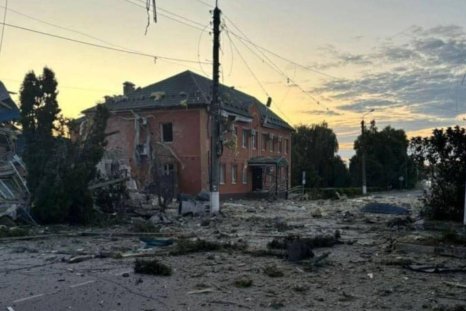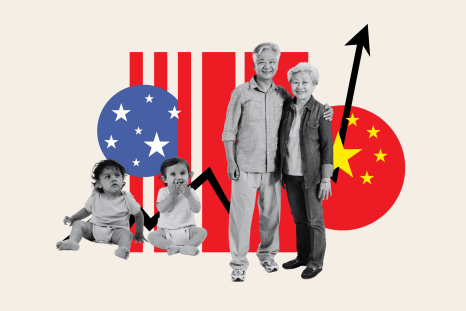Support truly
independent journalism
Support Now
Our mission is to deliver unbiased, fact-based reporting that holds power to account and exposes the truth.
Whether $5 or $50, every contribution counts.
Support us to deliver journalism without an agenda.

Louise Thomas
Editor
Celebrations have erupted in Bangladesh after prime minister Sheikh Hasina agreed to the demands of student protesters and resigned, ending her 15-year grip on power in the country.
Ms Hasina has fled to India, where foreign minister S Jaishankar said she had been given approval to remain “for the moment”. The prime minister escaped from Dhaka on a military transport minutes before thousands of people stormed into her official residence and ransacked it.
Student leaders spearheading the country’s protests have demanded Nobel Peace Prize winner Muhammad Yunus, a long-time critic of Ms Hasina, be named chief adviser of a new interim government. The army – which announced Ms Hasina’s resignation – has said talks over the formation of a new administration are ongoing.
Bangladesh, the fourth largest country in the world by population, has been on edge for weeks amid protests that began over a controversial quota system for government jobs. The system guaranteed a set proportion of roles to the descendants of fighters in Bangladesh’s war of independence – seen as a measure to appease Ms Hasina’s political base.
A fresh spell of protests began over the weekend with people demanding Ms Hasina’s resignation, and at least 95 people died across the country on Sunday in the deadliest day of violence since the crisis began, with hundreds of people injured as both police and protesters used live ammunition.
Why were students protesting?
At the heart of the student protests that began in late June was the demand to scrap a quota system that reserved up to 30 per cent of government jobs for relatives of veterans who fought in Bangladesh’s war of independence in 1971 against Pakistan.
The protests began late last month but tensions escalated when students at Dhaka University, the country’s largest, clashed with police and a counter-protest inflamed the situation.
The students alleged the protests were peaceful until the student wing of Ms Hasina’s ruling Awami League party attacked them.
“We were protesting peacefully until we were attacked by the goons. It is our right to continue protesting, it is embedded in the history of this country and we shall continue to do so for our right,” a Dhaka university student who did not want to be named for fear of persecution told The Independent.
Protesters have argued that the quota system was discriminatory and benefitted supporters of Ms Hasina, whose political party led the independence movement. They demanded it be replaced with a merit-based system.
Ms Hasina’s government had halted the job quotas following mass student protests in 2018, but last month a high court ruling nullified that decision and reinstated the quotas after relatives of the 1971 veterans filed petitions.
On 21 July, the Supreme Court ordered that 93 per cent of government jobs would be allocated on merit and five per cent would be for veterans who served in the war. The remaining two per cent would be reserved for members of ethnic minorities and transgender and disabled people.
The decision was a partial win for the students after representatives from both sides met late on 19 July to discuss a resolution.
Why did Hasina resign?
The student protests have shone a spotlight on the cracks in Bangladesh‘s governance and economy as well as the frustrations of the country’s youth at rising unemployment where some 32 million young people are not in work or education.
Anger soon turned from demands over jobs to outrage at the way the protests were treated, with Ms Hasina referring to the protesters as “terrorists” and ordering police to shoot at them on sight.
“We have to look out for ourselves and our future generations. We need jobs in this country, we are already suffering from the lack of it,” said Alam Rashid, a student from Dhaka. “We have invited the government to have a conversation with us multiple times, instead she [Sheikh Hasina] just unleashed her police force on us,” he told The Independent.
During the weekend, there were reports of attacks across the country, including incidents of vandalism and arson targeting government buildings, offices of the ruling Awami League party, police stations and houses of public representatives. Clashes were reported in as many as 39 of the country’s 64 districts.
Sunday ended up being one the deadliest days of clashes yet, with at least 95 killed including both protesters and police officers.
Student coordinators of Dhaka University called for Monday to be marked by a “March to Dhaka”, calling it the “final answer” after the military said students defying a government curfew would face the “full force of the law”.
On Monday, 135 more people were killed as hundreds of thousands of people defied curfew to take over the capital. The military reportedly asked Ms Hasina to resign after top brass refused to order soldiers to open fire on more demonstrators.
Where will Hasina go?
Ms Hasina is currently at an Indian Air Force base outside the capital Delhi called Hindon. Multiple Indian media cited official sources as saying she is keen on going to the UK, and has submitted a request for political asylum.
British officials have reportedly downplayed the chances of Ms Hasina being accepted in the UK however, stating that the country’s immigration rules do not permit anyone, including a fleeing prime minister, to seek asylum or temporary refuge.
Ms Hasina was accompanied when she left Dhaka by her sister Sheikh Rehana Siddiq, who is the mother of Labour MP Tulip Siddiq.
The UK government has hardly been sympathetic towards Ms Hasina, however – on Monday British foreign secretary David Lammy called for a UN-led investigation into the way her government cracked down on the protests and the “tragic” loss of lives in Bangladesh.
CNN News18 said Ms Hasina is in the process of applying for asylum in other European countries, given the UK appears to be hesitant.
What’s next for Bangladesh?
After Ms Hasina’s resignation, army chief General Waker-Uz-Zaman announced in a televised address to the nation that an interim government would be formed.
He said he was assuming control at “a critical time for our country” and urged people to trust him.
“I am taking responsibility now and we will go to the president and ask to form an interim government to lead the country in the meantime.”
It was not clear if the army would play a role, but General Zaman said: “We will now go to the president of the country, where we will discuss about the formation of the interim government, form the interim government, and manage the nation.”
On Tuesday, Bangladesh’s parliament was dissolved, the president’s office said in a statement.
It was after student leaders spearheading the protest issued a strict deadline and asked “revolutionary students to be ready” if their demand was not met.
They have said they will not accept any government unless it is made up of candidates recommended by them.
“We wouldn’t accept any army-supported or army-led government,” they said.
Bangladesh’s borders have effectively been closed while the political uncertainty is being resolved, with major airlines suspending flights to Dhaka and long distance bus services suspended. Train services to neighbouring India, which were first paused in mid-July as the protests turned violent, have now been suspended indefinitely.
Amid fears of violence on the India-Bangladesh border, the Bangladeshi security forces said they have “received strict instruction from the government to not allow anyone into the country without valid documents”.
Bangladesh’s biggest police union, the Bangladesh Police Service Association (BPSA), defended the conduct of its officers during the protests and declared a national strike on Tuesday in view of the security situation in the country.
“Until the security of every member of the police is secured, we are declaring a strike,” BPSA said in a statement.
Disclaimer: The copyright of this article belongs to the original author. Reposting this article is solely for the purpose of information dissemination and does not constitute any investment advice. If there is any infringement, please contact us immediately. We will make corrections or deletions as necessary. Thank you.



